AUBURN, IN – Ford's famous Flathead was the first V8 offered in the popular-price class, the engine that brought V8 motoring to the masses. From mid-1932 though the end of 1953, the Flathead powered the last vehicles built to Henry Ford's specification, and the first all-new models of Ford's postwar renaissance. It became a mainstay of American auto racing and the beating heart of early hot rodding. And when Dearborn retired it after 18 model years and 15 million units, it was still the only V8 in its price range. The Flathead defined an era, and that era is preserved, commemorated, and celebrated at The Early Ford V8 Foundation Museum in Auburn, Indiana.
On the west side of I-69, a literal stone's throw north of Kruse Plaza, a dealership-size blue oval atop a round steel pylon draws attention to a white one-story building, a scale replica of the Ford Rotunda rising from its southern wing. In the entrance foyer, a life-size cutout of Henry Ford seems to make eye contact over an early Flathead engine. The main part of the museum is divided into three galleries. In the center gallery, named for Frank Corey, close to 50 cars (and at least one pickup) are arranged chronologically, from a '32 Deluxe Phaeton to the final Flatheads of '49-53. In addition to a truly representative collection of sedans, coupes and convertibles, we also spotted some relative rarities, including a '50 Ford Crestliner and a '51 Mercury wagon. A '37 Lincoln-Zephyr coupe and a '40 Lincoln-Zephyr Continental convertible reminded us that the museum covers an era, not just an engine – although the Zephyr V12 was developed directly from the Ford V8. This particular Continental is number 49 of 350 convertibles built in 1940. An active-duty serviceman purchased it in 1954 and drove it cross-country three times, then shipped it to Germany, drove it up to Scandinavia and down to the French Riviera. It returned home with him after his tour and remained his daily driver into the late 1970s.
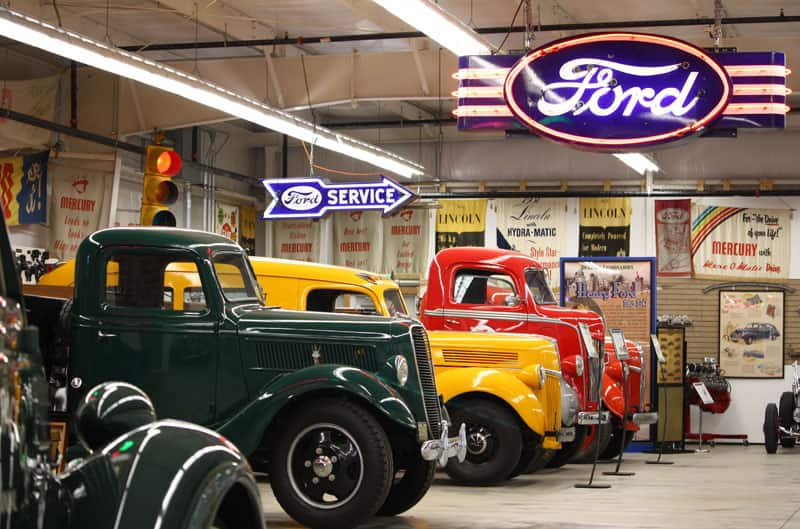

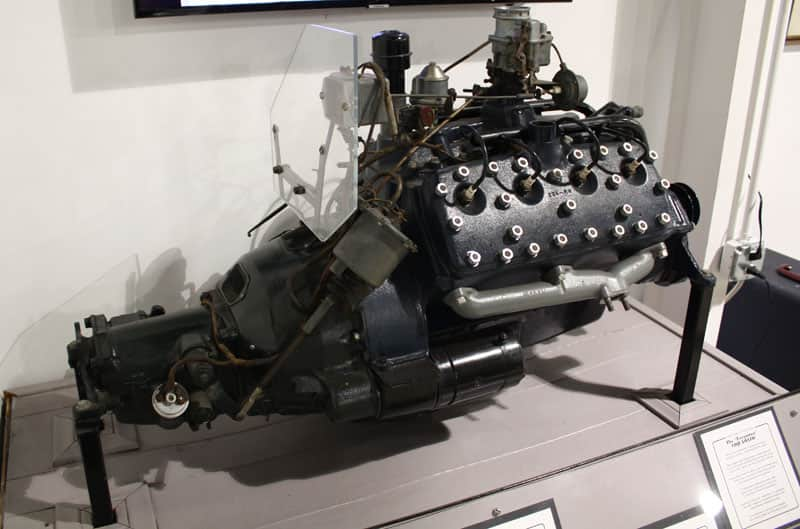
There's an exhibit highlighting the evolution of Ford instrument panels, a chromed and cutaway 1940 Flathead and gearbox, and what might be the only surviving Liquamatic transmission. Only 744 of these semi-automatics were installed in 1942 Lincolns and Mercurys, and all of them were recalled for reliability issues. This one was discovered at a Minnesota Ford dealer in 1971, where it appeared to have been packed for return to Dearborn and then somehow forgotten.
The even larger space to the south of the Corey Gallery is dressed to evoke a Ford salesroom of the mid-1930s. Designated “Floyd Motors,” it was built to house nearly two dozen 1936 Fords donated by South Dakota collector Joe Floyd, who thought the '36 was the prettiest of all the Flathead Fords. (That he was born in 1936 may have influenced his preference.) All 18 passenger-car body-style-and-trim combinations are represented, plus a pickup and a sedan delivery.
Less likely to appear in a typical U.S. showroom is the four-seat cabriolet by Glaser of Dresden – number 16 of 24 built in 1935-37 on a German Ford chassis, this rare survivor spent the war years in Argentina. Even more esoteric is one of six stainless steel Deluxe Tudor Touring Sedans commissioned by alloy specialist Allegheny Steel for its top sales reps. Joe donated both of those, also, along with a '36 display chassis, a spare engine, a complete '36 Ford tool kit – and a 1-1/2-ton dump truck.
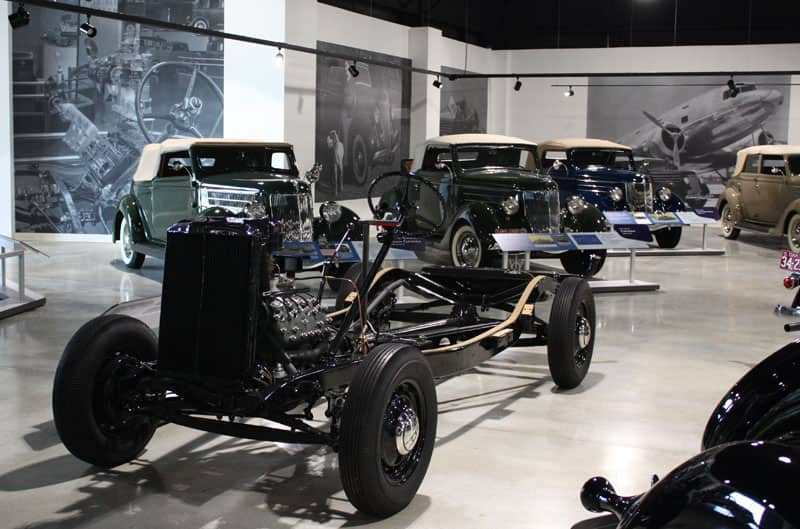



“All those cars are near and dear to my heart,” said Craig Floyd, Joe's son, and president of the museum's board of trustees “I worked on them, slept in them, cried on them, bled on them. Years ago, my brothers and sisters and I said to my father, 'I don't want to look in Hemmings after you're gone and wonder if a car was one of yours. I want to know where your cars are'.” Joe donated the cars, built the gallery, and established an endowment to maintain them.
In fact, all of the cars in the museum have been donated. The Early Ford V8 Club of America was founded in San Leandro, California, in 1963; about 40 years later the Club established the Early Ford V8 Foundation as a 501(c)(3), where members could donate automobiles and automobilia, with the ultimate goal of establishing a museum.
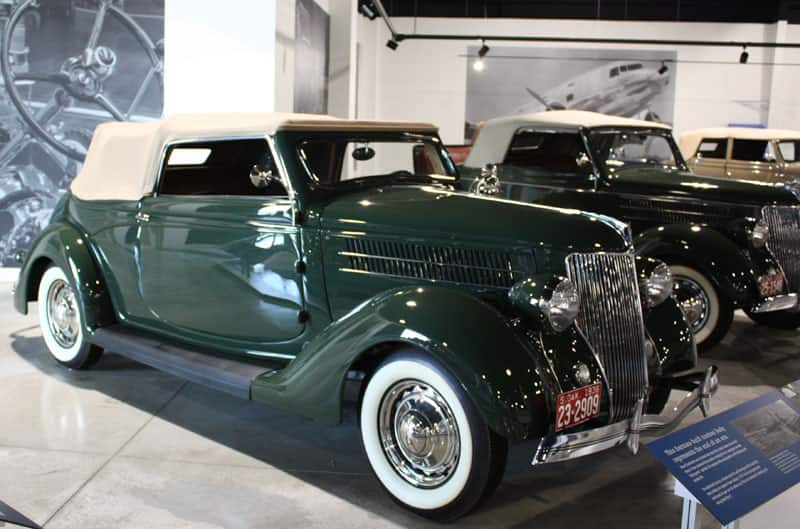
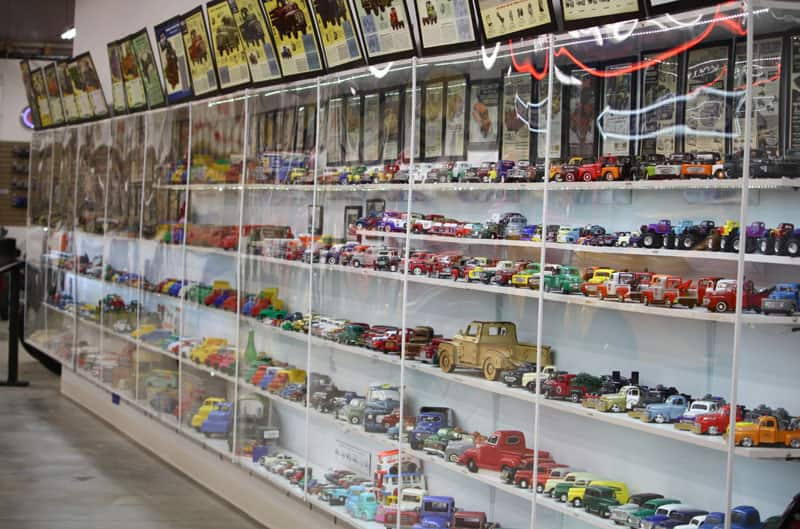
Various sites were considered, including the Gilmore complex in Hickory Corners, Michigan, before the board chose the property adjacent to Kruse Plaza in Auburn. This was nearly 20 years ago, when the enormous, 200,000-square-foot Kruse building housed the World War II Victory Museum and the Kruse Automotive and Carriage Museum; with plans for an Andy Granatelli Hall of Fame, among other auto-related attractions on the same 400-acre site. Then in late 2009, two collectors who had consigned cars to Kruse International accused the auction house of fraud –and the Dean Kruse empire started to unravel.
“We had already built the building when Dean ran into all his troubles,” Craig Floyd recalled. “Things started to go south in a hurry, with a lot of cold feet about what we were doing there.” But with so much invested in the property already, it was ultimately decided that an early Ford V8 museum could stand alone. After all, this is Auburn, Indiana. The Auburn Cord Duesenberg Museum is eight minutes to the east. Less than two hours west lies South Bend and the Studebaker National Museum; from there it's less than two and half hours south to the Indianapolis Motor Speedway. Auburn, said Floyd, 'is the best car town in the world.”

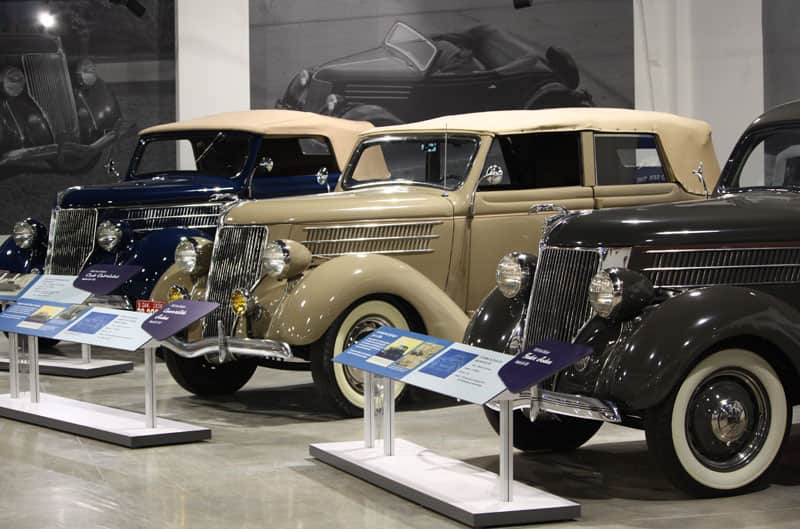
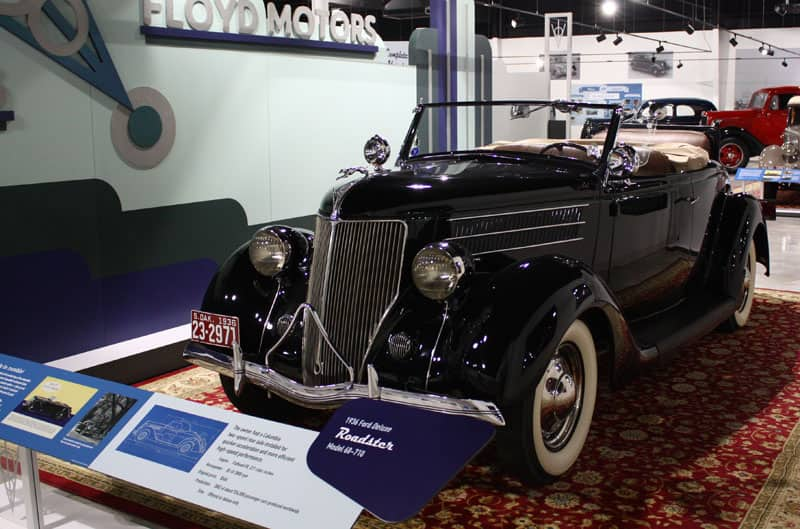
Across the central gallery from Floyd Motors is a recreated vintage speed shop, where high-performance heads and manifolds from Offenhauser, Edelbrock, Navarro and Granger hang from slatwall, or hop-up display engines topped by dual or triple Strombergs. Glass-fronted cabinets display ignition coils, intake stacks and magneto drives. Two single-seat race cars add to the ambiance – on loan to the museum at the time of our visit and since returned to their owner, but sufficiently interesting to merit their own story (see below).
Further on, a recreated race shop showcases a '37 Ford stock car built and campaigned by Flathead parts supplier Roy Nacewicz. A small collection of commercial vehicles faces a 20-foot wall of Ford trucks in miniature. There are even a couple of Ford 8N tractors (produced 1947-52), one of them re-powered by Garrett GTP 30-67 aircraft turbine.
Its eclectic collection has certainly contributed to the museum's success, but so has its pragmatic and often entrepreneurial approach to finance. “A lot of people told us that they couldn't afford to donate a car,” said Floyd, “but they wished they could find someone to help sell it. So a light went on in our heads. We can't buy cars ourselves because we are not in that position, but if we could become a licensed used car dealer – which is not easy in Indiana, but we did it – then we could help people sell cars and collect part of the proceeds. As far as we can tell, we're the lowest-cost option for brokering a car.
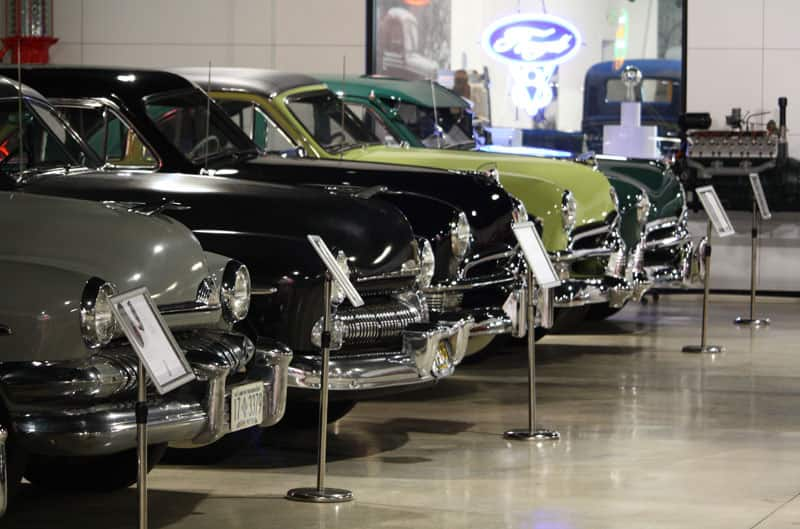
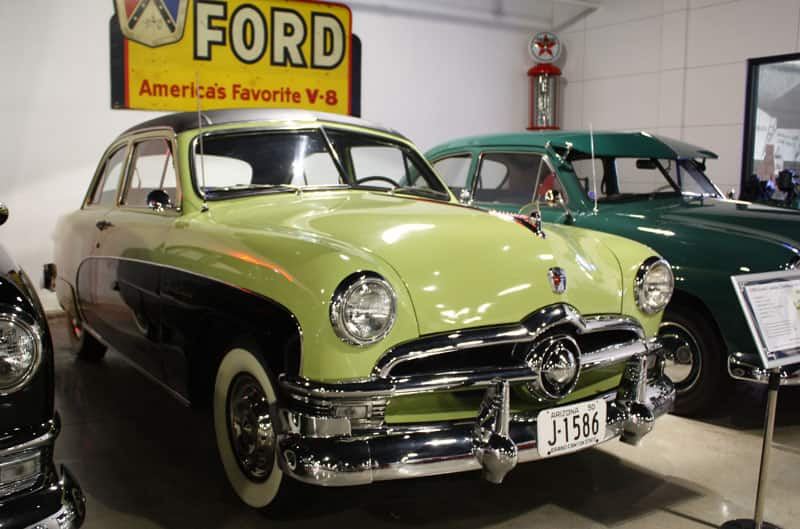
“Then we hired two full-time mechanics, so we can get cars out of storage, get them running, and help sell them.” And not just Fords: “It is surprising the cars that we get, but that is what we do, and it works really well for us. So we have for-profit businesses that our non-profit company owns, and they can keep us going, so we never have to depend on the gate, we never have to depend on donations, and we don't depend on an endowment to help pay our bills.”
During the Pandemic, when other museums struggled to survive, the Early Ford V8 Museum planned a second building – now finished and open – housing an event center, a workshop and a classroom. The size of the event center was carefully researched; there are smaller and larger venues in Auburn, but no other this size. Now a third facility, which will include a machine shop, is on the horizon.
Despite this record of success, Floyd still encounters skepticism from colleagues in what he calls “the museum world.”
“Their eyes roll up into their heads,” he said, “But we're doing whatever we can do to pay the bills. It's not what museums do, but it's how we are going to stay relevant in the years going forward.”
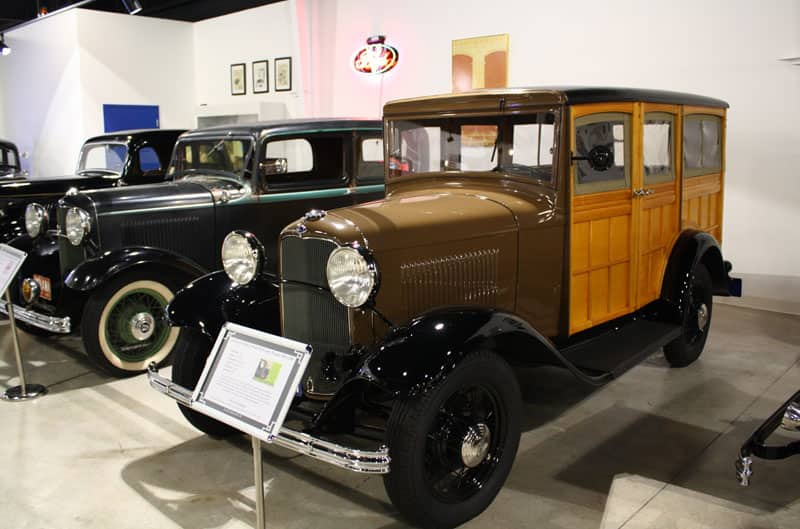
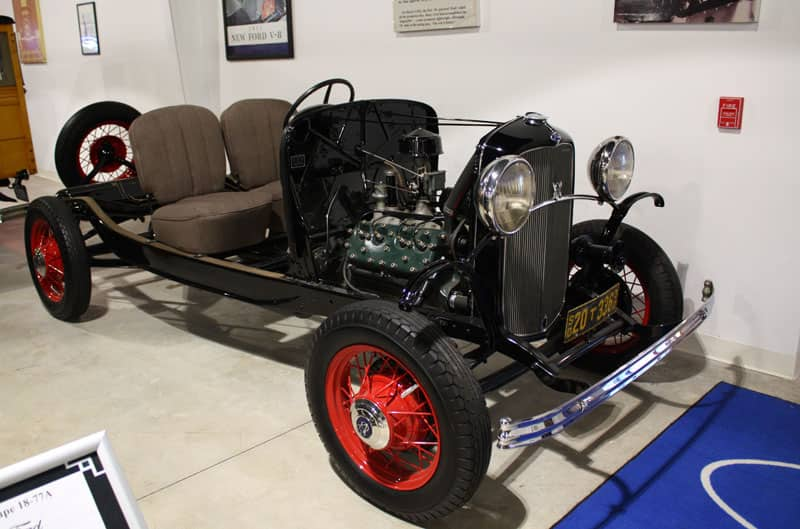
Four-Cylinder Racing in the Flathead Era
While Ford's famous Flathead brought V8 motoring to the masses in 1932, four-cylinder Fords continued to dominate short-track racing until very late in the decade. Two antique race cars on loan to the Early Ford V8 Foundation Museum at the time of our visit illustrate the range of four-cylinder power used by U.S. racers in the 1930s. Both typify Midwestern “big cars” of the era, with Ford axles and cross-spring suspension.
One car's engine is fairly typical as well: a Model B Four upgraded to an overhead-valve operation via a four-port Riley head. Current owner Chad Delagrange, who raced sprint cars himself from 1994-2002, believes the car was built around 1937, either by original owner/driver Eddie Zalucki; or by Roy Bichter, who would later purchase Bell Auto Parts. It passed through several owners, as race cars do, and may have been campaigned as late as 1948. Sometime in the 1980s its original engine was removed and a Model A block with a Miller-Scofield head installed in its place. In the '90s it was purchased by Steve Treon of Sidney Ohio, who restored it to its original Model B/Riley specification.
The other car, bearing the number “100,” is somewhat more exotic: Its four-cylinder power plant is in fact one bank of an overhead-cam Hispano-Suiza aircraft V8 dating from the Great War. It was built in 1929 in Chesterfield, Missouri, by William Howe, and driven by such notables as Bill Cummins and Maury Rose. With ample torque at low rpm, the 360 cubic-inch “Hisso” excelled on half-mile tracks. Chad's grandfather, Clarence Delagrange, a service manager at the Fort Wayne, Indiana, Packard agency, acquired it in 1939 and campaigned it as far west as Ames, Iowa, east to Heidelberg, Pennsylvania, and north to Michigan before retiring the by-then strikingly obsolete car in 1953. Beyond some minor tweaking, Clarence never updated the car, so it remains remarkably original.
Chad believes that between 28 and 30 U.S. race cars were built with all or part of a Hispano-Suiza V8: at least one with a complete engine, others with one bank of cylinders removed and the crankcase blanked off – and still others, like his grandfather's, with one original block of four cylinders mounted on a custom-made crankcase.
“Something I always heard from my father,” said Delagrange, “was that it would be neat to have another car that it raced with, because late at night when the sun went down they could lie to each other about the old days.” Delagrange bought the Riley-head car from Treon while it was on display at the museum.
SIDEBAR AND PHOTOS / COURTESY JOHN F. KATZ





